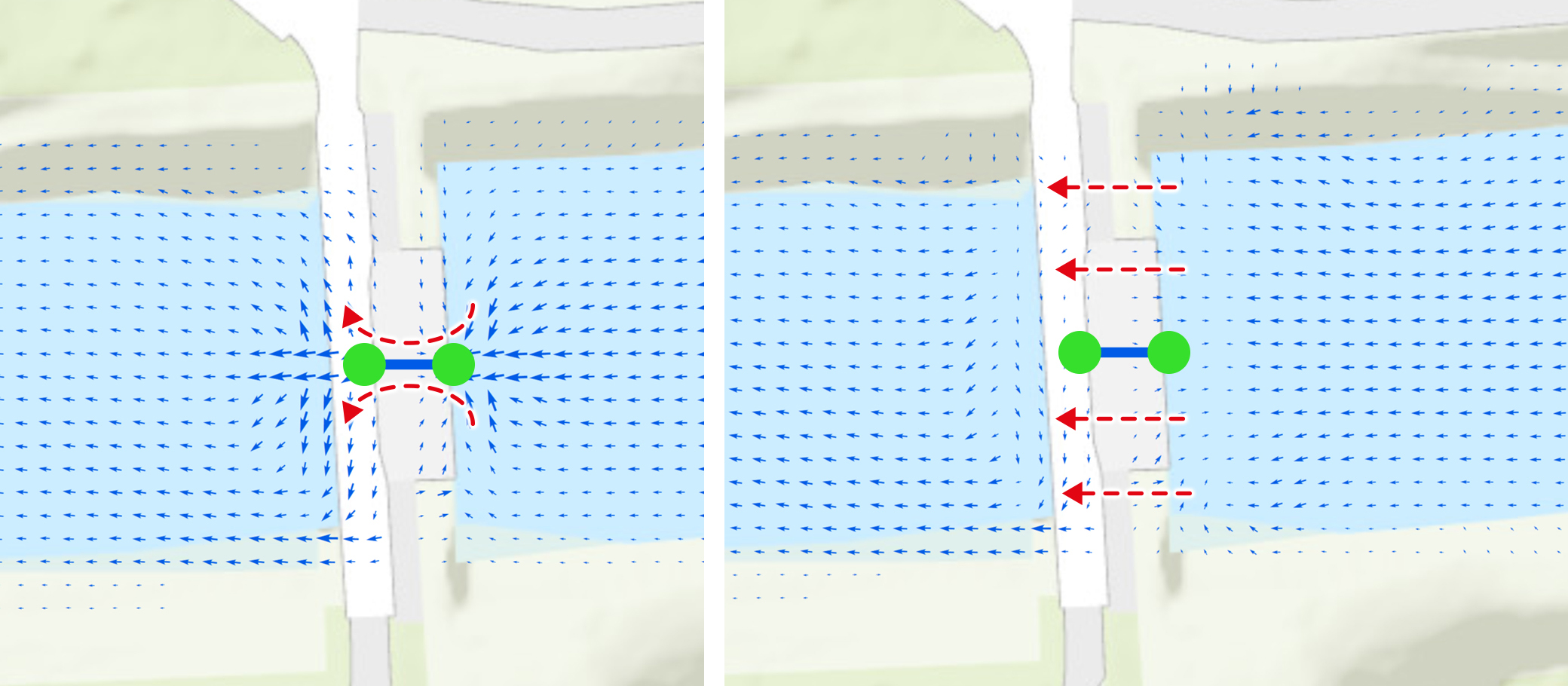Weir width (Water Overlay): Difference between revisions
Jump to navigation
Jump to search
No edit summary |
No edit summary |
||
| Line 7: | Line 7: | ||
}} | }} | ||
The width of the weir not only affects the amount of water which can flow across the weir, but also the amount of [[grid cell]]s on either side of the weir which allow water to flow through to the other side. The greater the weir's width, the more cells are considered to be part of the entry- and exitside of the weir. | The width of the weir not only affects the amount of water which can flow across the weir, but also the amount of [[grid cell]]s on either side of the weir which allow water to flow through to the other side. The greater the weir's width, the more cells are considered to be part of the entry- and exitside of the weir. | ||
The amount of cells which are considered to be part of the entry- and exitside of the weir, are based on the value of the WEIR_WIDTH attribute. | The amount of cells which are considered to be part of the entry- and exitside of the weir, are based on the value of the WEIR_WIDTH attribute. If the WEIR_WIDTH attribute is > 25m, the amount of cells has reached a maximum and does not increase anymore. | ||
Revision as of 10:23, 14 August 2020
Template:Overlay attribute The width of the weir not only affects the amount of water which can flow across the weir, but also the amount of grid cells on either side of the weir which allow water to flow through to the other side. The greater the weir's width, the more cells are considered to be part of the entry- and exitside of the weir. The amount of cells which are considered to be part of the entry- and exitside of the weir, are based on the value of the WEIR_WIDTH attribute. If the WEIR_WIDTH attribute is > 25m, the amount of cells has reached a maximum and does not increase anymore.
This figure depicts the original way of implementing weirs (left), and the current way they are implemented in the Tygron Platform (right).





